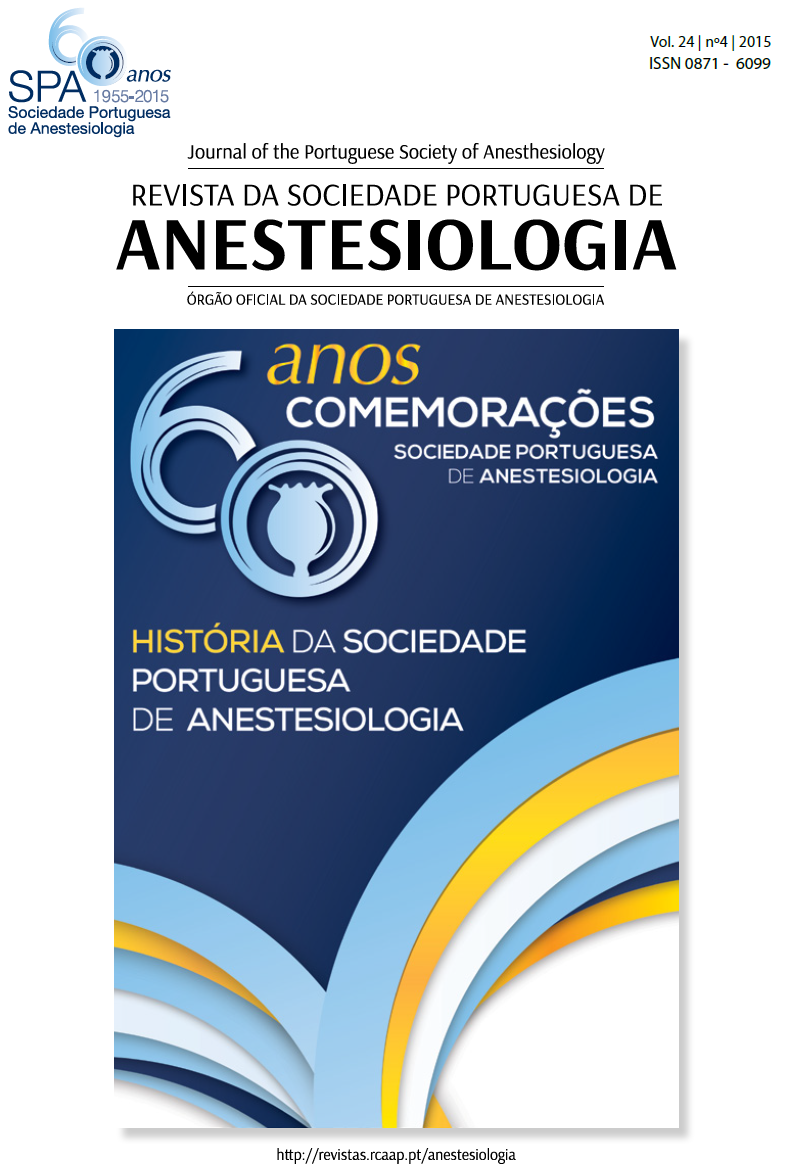São João Hospital Assessement of Anesthetic Gases
DOI:
https://doi.org/10.25751/rspa.6684Keywords:
Anesthetics, Inhalation, Occupational Exposure, Operating RoomsAbstract
Introduction
Adverse health effects related with chronic exposure to waste anesthetic gases remaincontroversial. Strict threshold values are recommended to minimize possible health risks.The objective of our study was to measure the concentration of waste anesthetic gases indifferent S. João Hospital places in a 7-year period.
Material and Methods
A retrospective study with bi-annual evaluation of nitrous oxide, sevoflurane and desfluranewas made between 2005 and 2012 in Anesthesiology Department, Operatory Rooms and in the Burn Unit. Trace gas analysis was performed by infrared spectroscopy.
Results
An anesthetic gas concentration above the upper limit of the threshold value was found inthe Burn Unit (54.5%), Computed Tomography/Magnetic Resonance (CT/MR) (38.6%) andAmbulatory Operatory Room (34.5%). Desflurane assessment was more frequently abovethe upper limit of threshold value (16.7%).
Discussion
In Burn Unit patients, sedation/general anesthesia is the most commonly used anesthesia and the inhalatory route is frequently used. In the TC/MR department, the small number ofair cycling per hour and the frequently used of an open ventilation system may explain theresults. Desflurane, being odourless, may be connected to undetected escape.
Conclusions
The places with more occupational risk were the Burn Unit, TC/MR and Ambulatory OperatingRoom. Inadequate ventilation doesn’t seem to explain the majority of out of limit values.It’s necessary the rigorous assessment of anesthetic gases in the Hospital environment.
Downloads
Downloads
Additional Files
Published
How to Cite
Issue
Section
License
Articles are freely available to be read, downloaded and shared from the time of publication.
The RSPA reserves the right to commercialize the article as an integral part of the journal (in the preparation of reprints, for example). The author should accompany the submission letter with a declaration of copyright transfer for commercial purposes.
Articles are published under the terms of the Creative Commons Attribution Non-Commercial License (CC BY-NC).
After publication in RSPA, authors are allowed to make their articles available in repositories of their home institutions, as long as they always mention where they were published.


